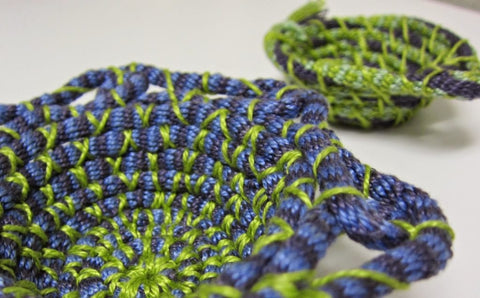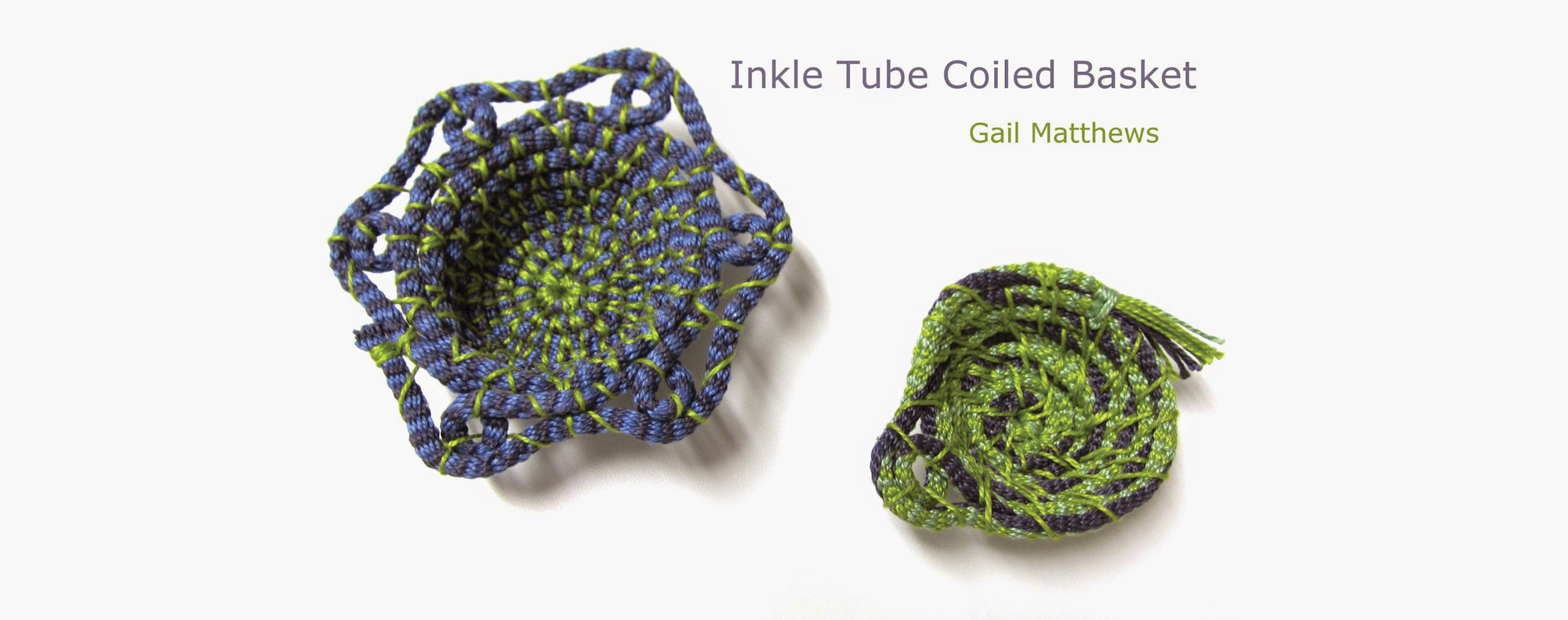By Gail Matthews
I can't say exactly what made me think of weaving a tube then making a coiled basket. Mostly I wanted to do something different. I grabbed three colors of 3/2 cotton, and put a warp of 20 ends, about 72" long, on the Inkle Loom--enough length to play with to see if my concept was workable. The warp for the second basket used the full length of the loom.
I thought about how I wanted the colors to go around the tube, and how the colors would look when coiled up. The two baskets here are just first experiments - there's a lot more to explore in this area.
The warps are shown below. Start with a heddle, then alternate open and heddle ends.

first (sample) basket, in the back

second basket, in the foreground

I found weaving a tube to be very quick, especially since I didn't have to pay attention to selvedges or to the width of the band. Weaving a tube is simpler than you might think. All you do is put the shuttle through the shed from one side only, pulling the weft very tight with after each pass to bring the sides together. Beat, change sheds, and again put the shuttle through from the same side. I'm right handed, so I put the shuttle through from right to left every time.
If you pass the shuttle underneath the warp, the edges will meet to form the tube will be on the bottom. If you pass the shuttle over the top of the warp, the join is on the top. You can do it either way, the end result is the same, though if you pass the shuttle on top, you can keep an eye on the join as you weave.
Because you are really forcing the warp threads together, one consequence in the weaving is that you can't beat in the weft as closely as you can on a flat band. You'll want to keep this in mind when you design and weave an inkle tube.
Note: The Weaver's Inkle Pattern Directory by Anne Dixon has some information on tubular inkle weaving, but I didn't read it until after I made these baskets. Dixon discusses different methods of weaving tubes and the resulting twist. I got very little twist in my tubes. I did some things the author specifically says not to do, and it still worked. You might want to check it out, or you might want to leap in like I did.
Before I removed the tube from the loom, I finished the ends of the weaving by wrapping it with one of the warp colors, sewing the ends back into the tube, and putting a drop of white glue on it to make sure it would hold. After the glue dried, I cut the tube off the loom.
I tried different ways of sewing the coils together. On the sample, I quickly whip stitched it together, since it was, after all, a sample. The stitches are not closely spaced, resulting in a basket that is fairly soft and easy to shape. On the second basket, I used a traditional coiled basket technique, sewing around the coils in a figure eight. I also used a closer stitch spacing. The basket is still malleable, but is firmer than the sample.

stitching path—sample basket (left) and second basket (right)
I relied on my memories of making coiled baskets in Girl Scouts, but you can find many resources on the web for detailed instructions. I found many books on making baskets, and coiled baskets in particular.

